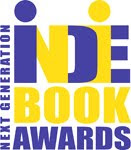
I had never been to the Morgan Library on Madison Avenue in New York City before today. In fact, I really didn't know it existed until recently. But when a fellow Jane Austen fan talked about its wonderful exhibit of Austen's letters, first editions, and even a partial manuscript, it piqued my interest. When my daughter, Emily, told me she was intent on going, we decided to make a day of it.
Driving into New York was easy from my home in eastern Pennsylvania. It was a warm and sunny day for early March--just right for a road trip. Route I-78 took us nearly the whole way to the Holland Tunnel, and once on the island finding the museum was easy. Parking is usually a problem, but today there was a free, empty space for us right across the street from the Morgan Library. We entered, paid our admission, and went right for the Jane Austen exhibit.
It was an amazing collection. Most of Austen's letters have been lost, but the ones that still exist give us a peak into the real-life world of one of the best novelists in the English language. This exhibit included many of the remaining letters of Jane to her sister, Cassandra, wherein she related her activities, thoughts, and concerns. While Cassandra had "edited" some of the letters by literally cutting out references to family members, one could get a sense of the woman who wrote them. She was intelligent, observant, and unlikely to suffer fools easily. I think I would have liked her.
Jane's handwriting was small, even, and precise, despite her having used a quill. She made the most of her precious paper, squeezing in lines on the margins, or even writing a few lines perpendicular to the rest of the page when she ran out of room. The last part of the exhibit I read was a heart-wrenching letter from Cassandra to their niece, Fanny, to notify her of Jane's death, at the age of forty-one, from causes that are still undetermined. It was written over 190 years ago, but it still made me sad.
After the Austen exhibit, we still had some time before the library closed, so we decided to look at J. Pierpont Morgan's library.
I am not sure what I thought it would be, but the reality far exceeded any possible expectations. There were three rooms open to the public: the librarian's office, J. Pierpont Morgan's "study," and the main library room. The first of these was impressive. The librarian's desk is surrounded by antiques and a collection of books--pretty much as one would expect. The study, though, was amazing. It was surrounded by shelves filled with books, red silk damask walls, an enormous fireplace, portraits and other artwork, and an adorned 16th century coffered wooden ceiling that had been brought from Europe and fitted for the room. Track lighting and state-of-the-art security and fire suppression systems had been attached to the ceiling, but it retained its sense of age and history. The study was once called the "most beautiful room in America." J. Pierpont Morgan spent much of his time there, entertaining notable guests, smoking cigars, and playing solitaire.
As grand as the study was, it was nothing in comparison to the main library on the other side of the rotunda. It has three stories of inlaid walnut bookcases housing Morgan's collection of important books from the past five hundred years, including three of the forty-eight Gutenberg Bibles known to still exist--more than in any other single collection. One was on display when we were there. The Morgan Library must be on the to-see list for every bibliophile.
One inescapable impression from the Morgan Library is the enormous wealth it took to amass such a collection. I, for one, am grateful that J. Pierpont Morgan, and his son J. P. Morgan, chose to use their wealth to assemble these pieces of literary history and mastery together, and then to make them available to the public.
I encourage you to learn more about the Morgan Library at www.themorgan.org, or if you are able to visit New York, to stop and spend a few hours at Madison Avenue and 36th Street.







No comments:
Post a Comment